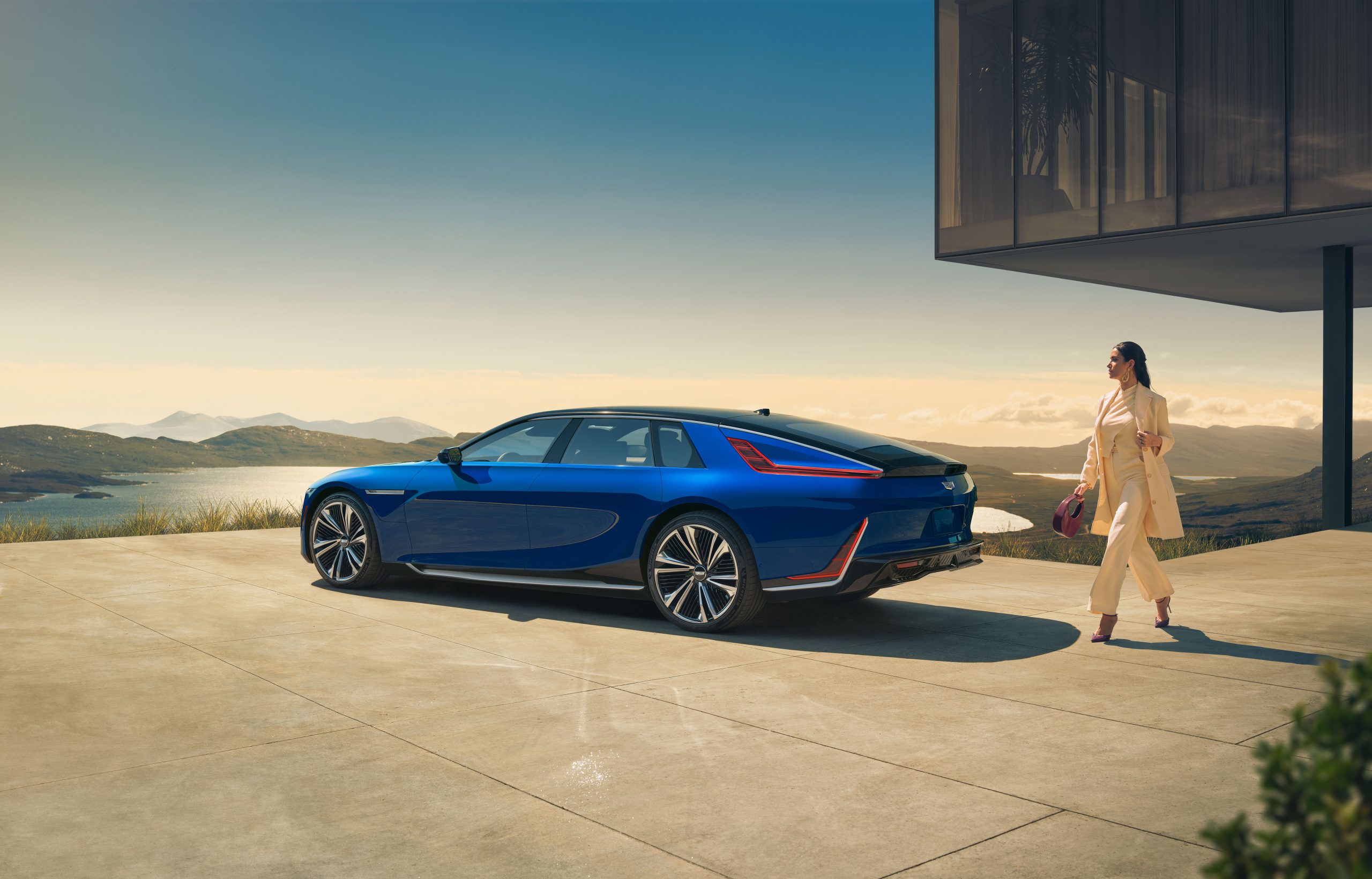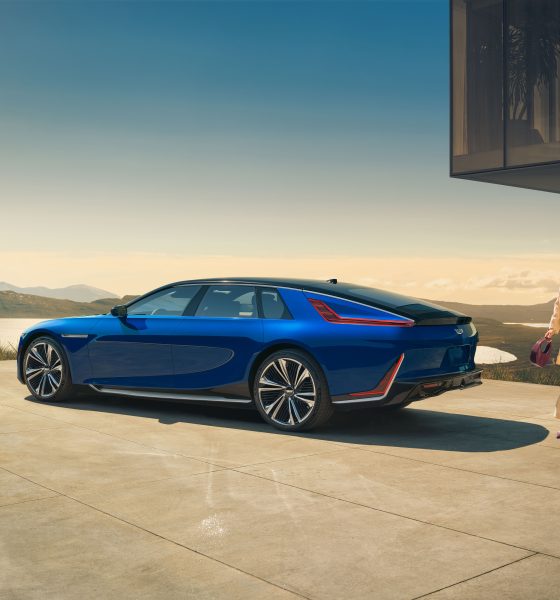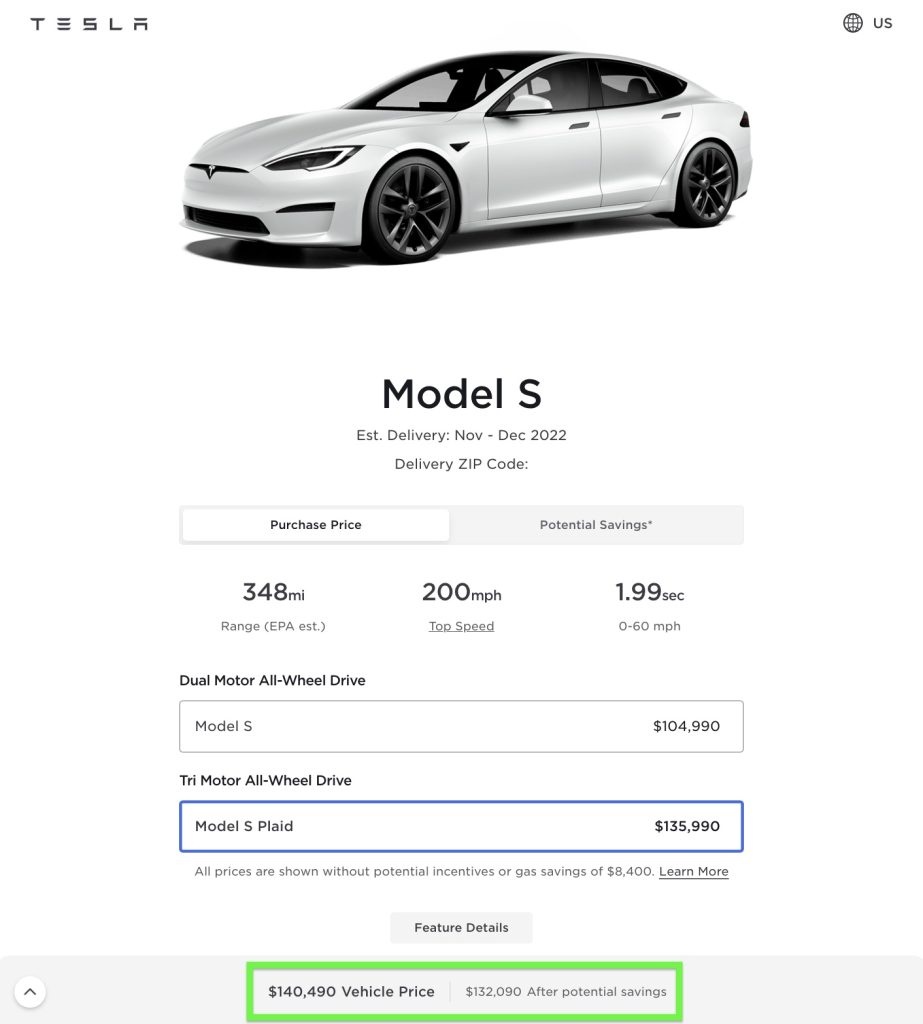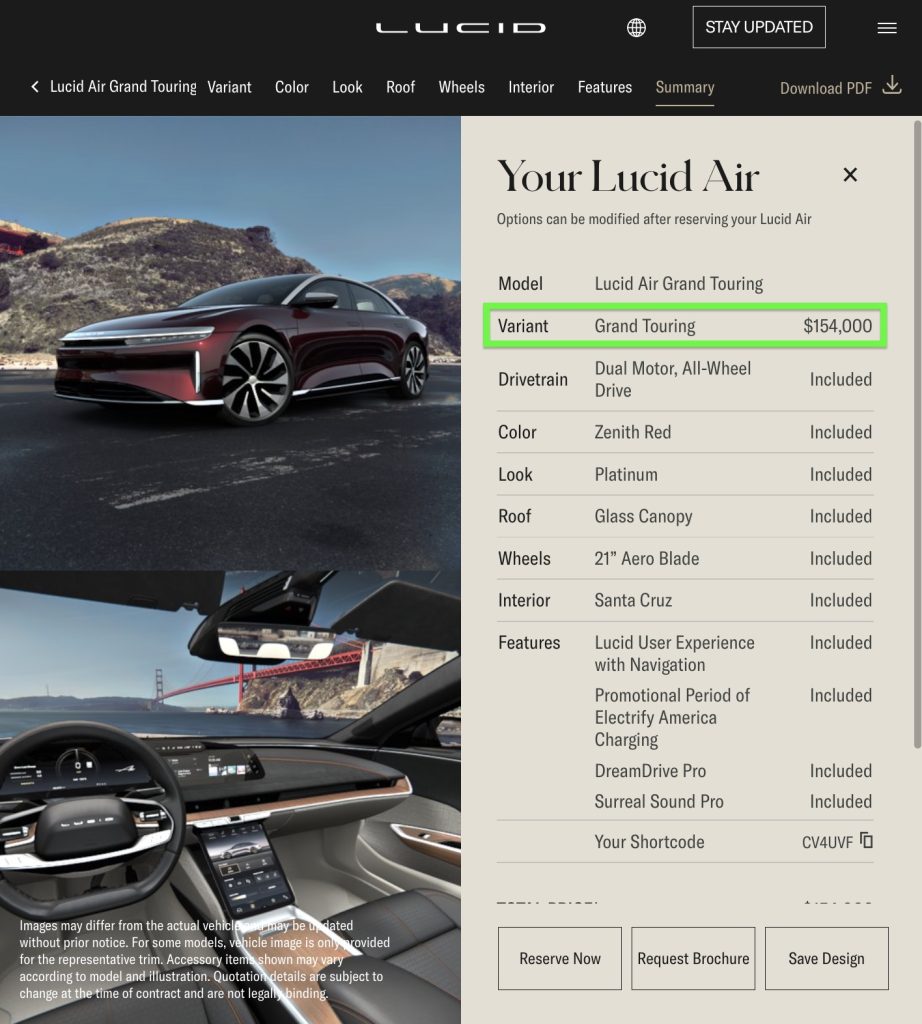

News
GM unveils Cadillac Celestiq, an 18-foot behemoth that starts at over $300,000
General Motors (GM) has unveiled the Cadillac Celestiq, a flagship, all-electric “halo car” designed to take on the likes of the world’s premier ultra-luxury car makers. Filled to the brim with tech and premium materials, the Celestiq is GM’s most ambitious electric yet, and it is evident in the vehicle’s starting price of over $300,000.
The Celestiq is a behemoth of a luxury car, 18 feet long and seven feet wide, making it larger than a Cadillac Escalade SUV. The vehicle is powered by a 111 kWh battery pack that’s capable of up to 200 kW charging and 300 miles of range. It’s also capable of going from 0-60 mph in 3.8 seconds, which, while not as quick as smaller rivals, is impressive for such a massive car.
For its starting price of $300,000, buyers of the Cadillac Celestiq can expect to receive a vehicle that Rory Harvey, global vice president of Cadillac, described as a “brand builder.” Its interior features a 55-inch diagonal screen that spans the front cabin, a “smart glass roof,” and Ultra Cruise, the successor of GM’s Super Cruise system, among others. The interior also includes 115 3D-printed parts.
Considering the Celestiq’s starting price, customers would be able to customize practically every part of the vehicle. Buyers could also be assured that their Celestiq is completely hand-built, with Cadillac only building a couple or so units per day. Brandon Vivian, Celestiq executive chief engineer, noted that the vehicle is a celebration of a client’s individuality.
“When we started this process, the brief then we gave to the team was to develop the most epic Cadillac ever. But the result is a vehicle unlike any other… It’s a custom-commissioned celebration of the client’s individuality,” Vivian said.
But while the Cadillac Celestiq is impressive, it is entering a market that is already filled with rivals that offer more performance or nearly comparable luxury at a lower price. The Tesla Model S Plaid blows the Celestiq’s raw performance out of the water for a fraction of its cost, and the Lucid Air Grand Touring offers far more range and similar traditional luxury amenities for a lower price.


In fact, with the Celestiq starting at $300,000, a buyer can purchase a Tesla Model S Plaid with a 1.99-second 0-60 mph time and a Lucid Air Grand Touring with 516 miles of range and still have some money left over. As of writing, the Tesla Model S Plaid can be purchased for $140,490 with its performance-oriented 21″ Arachnid Wheels, while the Lucid Air Grand Touring Dual Motor can be bought for $154,000. These two vehicles combined still cost less than the starting price of the Cadillac Celestiq.
However, if GM can pull off the Celestiq, the veteran automaker can end up taking a spot beside the world’s most notable ultra-luxury automakers like Bentley and Rolls-Royce. As to whether Cadillac has what it takes to accomplish this goal, only time will tell.
Production of the Cadillac Celestiq is expected to start December next year.
The Teslarati team would appreciate hearing from you. If you have any tips, contact me at maria@teslarati.com or via Twitter @Writer_01001101.

Elon Musk
Elon Musk and Tesla AI Director share insights after empty driver seat Robotaxi rides
The executives’ unoccupied tests hint at the rapid progress of Tesla’s unsupervised Robotaxi efforts.

Tesla CEO Elon Musk and AI Director Ashok Elluswamy celebrated Christmas Eve by sharing personal experiences with Robotaxi vehicles that had no safety monitor or occupant in the driver’s seat. Musk described the system’s “perfect driving” around Austin, while Elluswamy posted video from the back seat, calling it “an amazing experience.”
The executives’ unoccupied tests hint at the rapid progress of Tesla’s unsupervised Robotaxi efforts.
Elon and Ashok’s firsthand Robotaxi insights
Prior to Musk and the Tesla AI Director’s posts, sightings of unmanned Teslas navigating public roads were widely shared on social media. One such vehicle was spotted in Austin, Texas, which Elon Musk acknowleged by stating that “Testing is underway with no occupants in the car.”
Based on his Christmas Eve post, Musk seemed to have tested an unmanned Tesla himself. “A Tesla with no safety monitor in the car and me sitting in the passenger seat took me all around Austin on Sunday with perfect driving,” Musk wrote in his post.
Elluswamy responded with a 2-minute video showing himself in the rear of an unmanned Tesla. The video featured the vehicle’s empty front seats, as well as its smooth handling through real-world traffic. He captioned his video with the words, “It’s an amazing experience!”
Towards Unsupervised operations
During an xAI Hackathon earlier this month, Elon Musk mentioned that Tesla owed be removing Safety Monitors from its Robotaxis in Austin in just three weeks. “Unsupervised is pretty much solved at this point. So there will be Tesla Robotaxis operating in Austin with no one in them. Not even anyone in the passenger seat in about three weeks,” he said. Musk echoed similar estimates at the 2025 Annual Shareholder Meeting and the Q3 2025 earnings call.
Considering the insights that were posted Musk and Elluswamy, it does appear that Tesla is working hard towards operating its Robotaxis with no safety monitors. This is quite impressive considering that the service was launched just earlier this year.
Elon Musk
Starlink passes 9 million active customers just weeks after hitting 8 million
The milestone highlights the accelerating growth of Starlink, which has now been adding over 20,000 new users per day.

SpaceX’s Starlink satellite internet service has continued its rapid global expansion, surpassing 9 million active customers just weeks after crossing the 8 million mark.
The milestone highlights the accelerating growth of Starlink, which has now been adding over 20,000 new users per day.
9 million customers
In a post on X, SpaceX stated that Starlink now serves over 9 million active users across 155 countries, territories, and markets. The company reached 8 million customers in early November, meaning it added roughly 1 million subscribers in under seven weeks, or about 21,275 new users on average per day.
“Starlink is connecting more than 9M active customers with high-speed internet across 155 countries, territories, and many other markets,” Starlink wrote in a post on its official X account. SpaceX President Gwynne Shotwell also celebrated the milestone on X. “A huge thank you to all of our customers and congrats to the Starlink team for such an incredible product,” she wrote.
That growth rate reflects both rising demand for broadband in underserved regions and Starlink’s expanding satellite constellation, which now includes more than 9,000 low-Earth-orbit satellites designed to deliver high-speed, low-latency internet worldwide.
Starlink’s momentum
Starlink’s momentum has been building up. SpaceX reported 4.6 million Starlink customers in December 2024, followed by 7 million by August 2025, and 8 million customers in November. Independent data also suggests Starlink usage is rising sharply, with Cloudflare reporting that global web traffic from Starlink users more than doubled in 2025, as noted in an Insider report.
Starlink’s momentum is increasingly tied to SpaceX’s broader financial outlook. Elon Musk has said the satellite network is “by far” the company’s largest revenue driver, and reports suggest SpaceX may be positioning itself for an initial public offering as soon as next year, with valuations estimated as high as $1.5 trillion. Musk has also suggested in the past that Starlink could have its own IPO in the future.
News
NVIDIA Director of Robotics: Tesla FSD v14 is the first AI to pass the “Physical Turing Test”
After testing FSD v14, Fan stated that his experience with FSD felt magical at first, but it soon started to feel like a routine.

NVIDIA Director of Robotics Jim Fan has praised Tesla’s Full Self-Driving (Supervised) v14 as the first AI to pass what he described as a “Physical Turing Test.”
After testing FSD v14, Fan stated that his experience with FSD felt magical at first, but it soon started to feel like a routine. And just like smartphones today, removing it now would “actively hurt.”
Jim Fan’s hands-on FSD v14 impressions
Fan, a leading researcher in embodied AI who is currently solving Physical AI at NVIDIA and spearheading the company’s Project GR00T initiative, noted that he actually was late to the Tesla game. He was, however, one of the first to try out FSD v14.
“I was very late to own a Tesla but among the earliest to try out FSD v14. It’s perhaps the first time I experience an AI that passes the Physical Turing Test: after a long day at work, you press a button, lay back, and couldn’t tell if a neural net or a human drove you home,” Fan wrote in a post on X.
Fan added: “Despite knowing exactly how robot learning works, I still find it magical watching the steering wheel turn by itself. First it feels surreal, next it becomes routine. Then, like the smartphone, taking it away actively hurts. This is how humanity gets rewired and glued to god-like technologies.”
The Physical Turing Test
The original Turing Test was conceived by Alan Turing in 1950, and it was aimed at determining if a machine could exhibit behavior that is equivalent to or indistinguishable from a human. By focusing on text-based conversations, the original Turing Test set a high bar for natural language processing and machine learning.
This test has been passed by today’s large language models. However, the capability to converse in a humanlike manner is a completely different challenge from performing real-world problem-solving or physical interactions. Thus, Fan introduced the Physical Turing Test, which challenges AI systems to demonstrate intelligence through physical actions.
Based on Fan’s comments, Tesla has demonstrated these intelligent physical actions with FSD v14. Elon Musk agreed with the NVIDIA executive, stating in a post on X that with FSD v14, “you can sense the sentience maturing.” Musk also praised Tesla AI, calling it the best “real-world AI” today.








